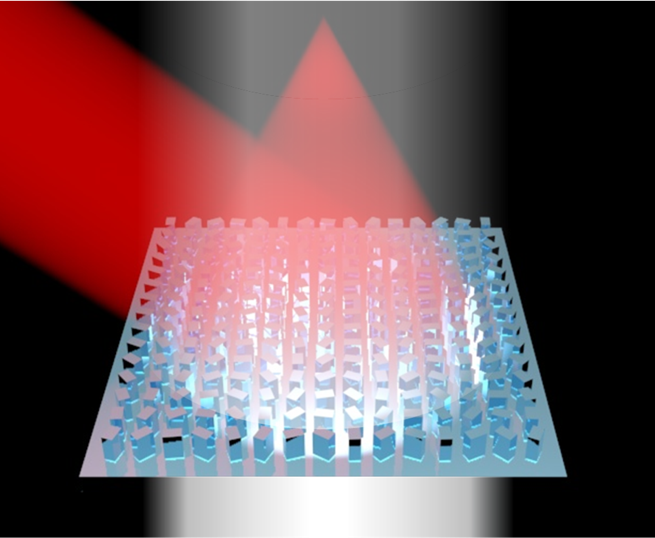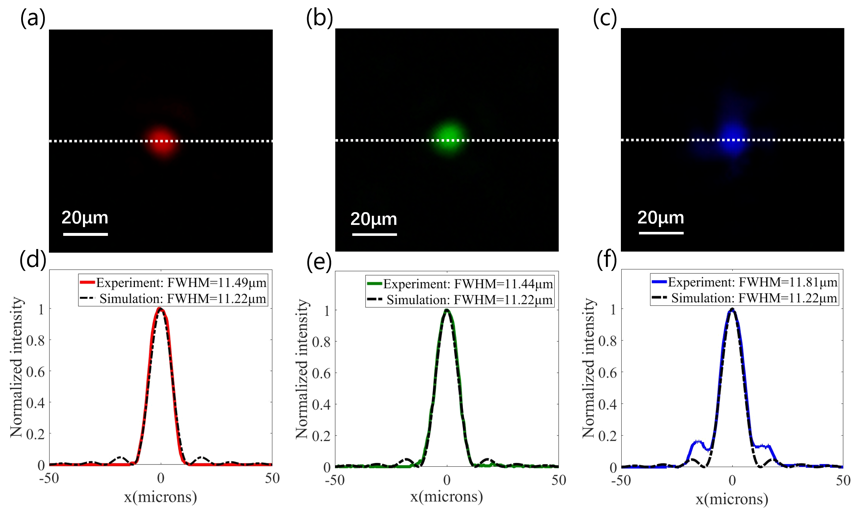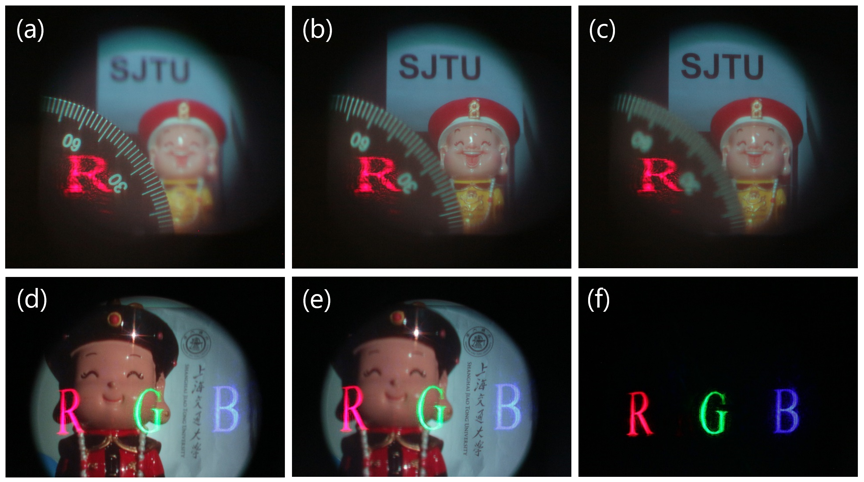- Home
- About Us
- Students
- Academics
-
Faculty
- Electrical Engineering
- Automation
- Computer Science & Engineering
- Electronic Engineering
- Instrument Science and Engineering
- Micro-Nano Electronics
- School of Software
- Academy of Information Technology and Electrical Engineering
- School of Cyber Security
- Electrical and Electronic Experimental Teaching Center
- Center for Advanced Electronic Materials and Devices
- Cooperative Medianet Innovation Center
- Alumni
-
Positions
-
Forum
News
- · Shanghai Jiao Tong University professors Lian Yong and Wang Guoxing's team have made remarkable progress in the field of high-efficiency pulse neural network accelerator chips.
- · AI + Urban Science research by AI Institute was selected as cover story in Nature Computational Science!
- · The first time in Asia! IPADS's Microkernel Operating System Research Wins the Best Paper Award at SOSP 2023
- · Delegation from the Institution of Engineering and Technology Visits the School of Electronic Information and Electrical Engineering for Journal Collaboration
- · Associate professor Liangjun Lu and research fellow Jiangbing Du from Shanghai Jiao Tong University made important advancements on large capacity and low power consumption data transmission
Novel multifunctional metalenses for AR displays developed by Yan Li’s group at Shanghai Jiao Tong University
The research group lead by Yan Li, an associate professor from the Department of Electronic Engineering of Shanghai Jiao Tong University, have proposed for the first time an optical see-through reflective off-axis metalens element. This element can integrate the functions of an eyepiece and a beam splitter, and can be applied in augmented reality (AR) display systems to realize the fusion of virtual information and real-world scenes without an additional optical combiner. The work was published in the journal PhotoniX on 30 November 2022, under the title of "Ultracompact multifunctional metalens visor for augmented reality displays" . Shanghai Jiao Tong University is the first authoring institution of this study. Professor Yan Li from the Research Center for Opto-electronic Materials and Devices of the Department of Electronic Engineering and her master student Shuyi Chen contributed equally to this work. Professor Haowen Liang from Sun Yat-sen University, Professor Yikai Su from Shanghai Jiao Tong University and Professor Shin-Tson Wu from University of Central Florida are the corresponding authors.

Figure 1 Yan Li, Shuyi Chen, Haowen Liang
Research Background
In recent years, virtual reality (VR) and AR technologies, which take 3D display and human-computer interaction technologies as the core, are subtly revolutionizing the way people perceive and interact with the world. Near-eye VR/AR devices have been widely applied in healthcare, military training, education, entertainment and so on, and have become a research focus in both academia and industry. Considering users' demand for the immersion and comfort experience of AR display devices, how to reduce the volume and weight of the display system has become one of the challenges of the AR display technology at present. In this context, compact optical elements are essential to solve this problem. Metasurface is a kind of ultra-thin planar element composed of subwavelength nano-resonator arrays. It can break through the limitation of conventional refraction and diffraction optics and freely modulate the wavefront at the nanoscale. The compact form factor, high resolution and wavefront modulation flexibility also make metasurfaces easier to be integrated into AR display systems using new 3D display technologies, showing great potential in solving the above challenges. In the previous published work, the AR display systems based on metalenses often require additional optical combiners (such as beam splitters) to achieve virtual-real fusion effect due to their single transmission/reflection function, which increases the size, weight and complexity of the system. How to overcome this limitation and realize truly compact integration of AR near-eye display is still a challenging subject.
Innovation Results
The optical see-through reflective off-axis metalens innovatively proposed in this study can reflect and focus the 45 degree off-axis incident light while maintaining a good transmission property in the visible band (Figure 2). In order to satisfy the required phase distribution for the off-axis lens, the researchers designed the rotation angle distribution of the unit cell of the metalens based on the Pancharatnam-Berry (PB) phase modulation principle, and optimized the nano sturctures taking into consideration of the performances of both reflection and transmission. To further verify the optical performance of this metalens, the researchers successfully fabricated a sample based on electron beam lithography (EBL) technology with the designed wavelength of 633 nm. The experimental results show that this metalens achieves diffraction limited focal spots at the incident wavelengths of 457 nm, 532 nm and 633 nm (Figure 3) and a reasonably high focusing efficiency of 16.03% at the designed wavelength. Finally, the researchers successfully realized the multifunctional experimental verification of the metalens in an AR display system, where the camera used to simulate the human eye captured clearly recognizable virtual images as well as the real-world scenes through the element (Figure 4). Virtual images can be clearly displayed at any depth, thanks to the Maxwellian-view retinal projection technology based on the pin-hole imaging principle, which allows virtual light to be focused independently of the accommodation of human lens, providing consistently clear images at the retina within a larger depth of field. In summary, the results show that this optical see-through reflective off-axis metalens can integrate the functions of an eyepiece, and an beam splitter. Compared with the traditional transmission/reflection metalens (Figure 5a), no optical combiner is required (Figure 5b), which greatly reduces the form factor, weight and complexity of the near-eye AR display system. In addition, the element combined with the new 3D display technology will help achieve true 3D AR display without stereoscopic visual fatigue, and improve the immersion and comfortness of near-eye AR devices. This research will help promote the development of optical multifunctional integrated devices, and it is of great significance to broaden the applications of metasurfaces in more interdisciplinary fields.

Figure 2 Schematic illustration of the optical behavior of the proposed see‑through reflective off-axis metalens.

Figure 3 Focal spots of the fabricated metalens at RGB illumination. (a to c) Measured focal spot intensity profile at the illumination wavelengths of (a) 633 nm, (b) 532 nm and (c) 457 nm. (d to f) Corresponding normalized intensity profiles along the white dashed lines in (a to c) respectively and comparison with simulation results based on Rayleigh‑Sommerfeld diffraction.

Figure 4 AR imaging results of the metalens‑visor. (a to c) Demonstration of single‑color AR imaging under red (633 nm) laser illumination. The images are focused at (a) 150 mm (dial), (b) 600 mm (puppet) and (c) 2000 mm (“SJTU”), respectively. (d, e) Demonstration of multi‑color AR and (f) corresponding VR imaging under red (633 nm), green (532 nm) and blue (457 nm) laser illumination. The images are focused at (d) 200 mm (puppet) and (e) 1200 mm (logo and texts), respectively.

Figure 5 Simplified schematic diagrams of near‑eye AR display systems based on (a) a traditional transmissive metalens and (b) a single piece see‑through reflective metalens‑visor.
Other Relevant Results
Yan Li's team have been engaged in the research of AR 3D displays for a long time. Recently, their research on a geometric phase liquid crystal vari-focal lens and its application in AR display systems has been published in Optics Express, Opt. Express 2022, 30(19): 34655-34664. This work is also selected to be Editors' Pick and reported by Phys.org, EurekAlert and other media.
Paper Information
Authors: Yan Li, Shuyi Chen, Haowen Liang, Xiuying Ren, Lingcong Luo, Yuye Ling, Shuxin Liu, Yikai Su and Shin-Tson Wu, Ultracompact multifunctional metalens visor for augmented reality displays, PhotoniX 3, 29 (2022).
Funding: This work was financially supported by National Key Research and Development Program (No. 2020YFC2007102), National Natural Science Foundation of China (61727808, 62075127 & 12074444), Guangdong Basic and Applied Basic Research Foundation (No. 2020A1515011184), and Guangzhou Basic and Applied Basic Research Foundation (No. 202102020987).
Link: https://link.springer.com/article/10.1186/s43074-022-00075-z
Journal Information: PhotoniX is a peer reviewed, open access (OA) high impact international journal, and is also the Journal of the Chinese Society of Optical Engineering. It mainly reports the subversive scientific research achievements and the latest engineering application progress brought about by the interdisciplinary integration of optical and photonics technology and information, energy, materials, life science, precision manufacturing, nano, opto-electronic devices, micro and nano electronics, etc. Its impact factor is 19.818, belonging to Q1 region.
-
Students
-
Faculty/Staff
-
Alumni
-
Vistors
-
Quick Links
